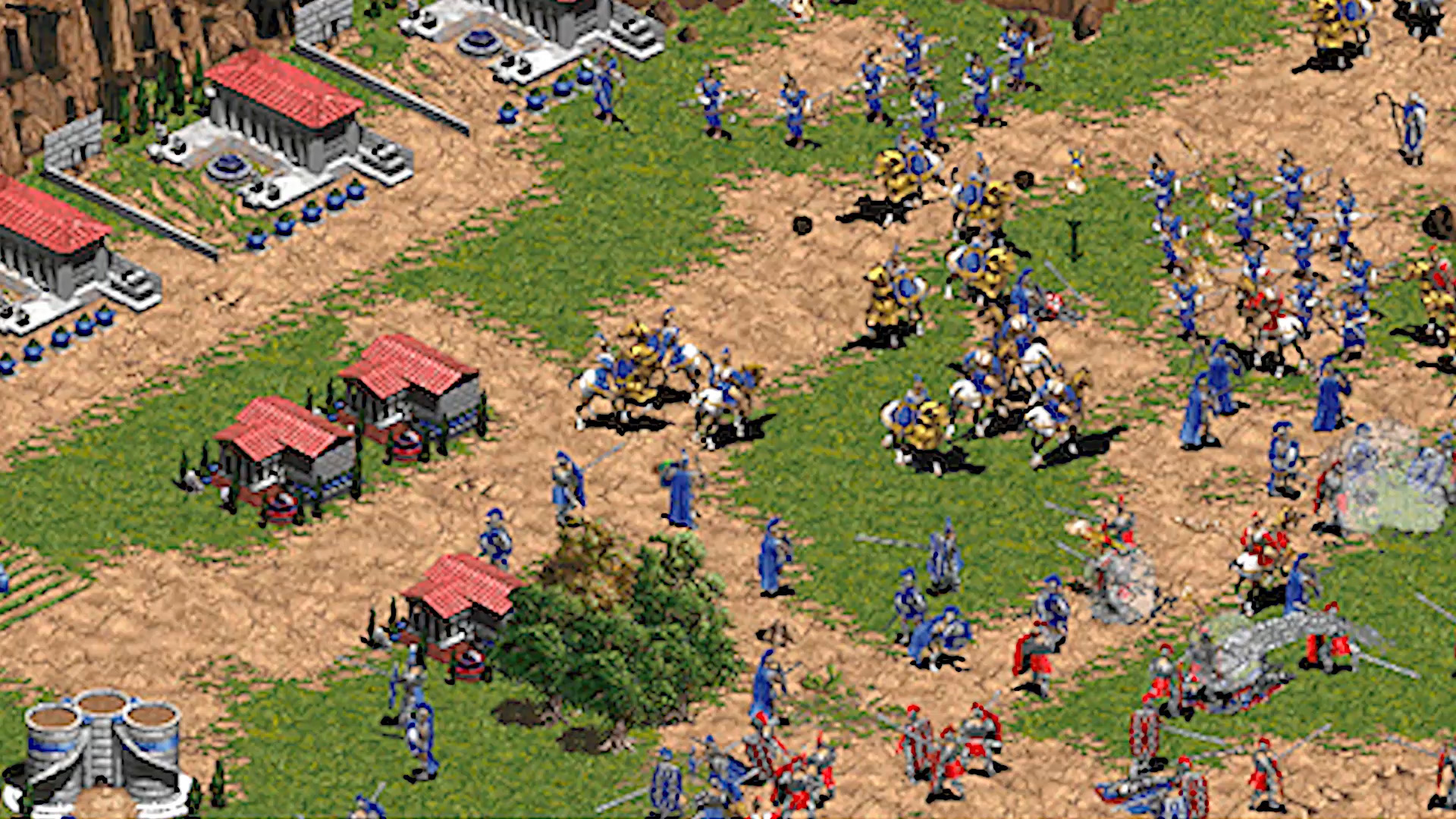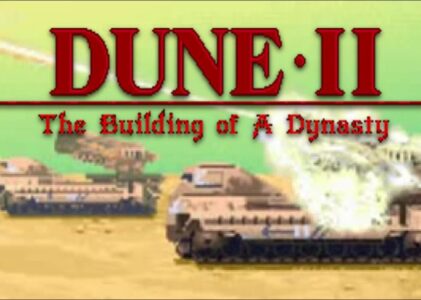In the world of computer gaming, few genres have left as profound a mark as real-time strategy (RTS) and turn-based strategy (TBS) games. The 80s and 90s were a golden era for strategy games, birthing iconic titles and pioneering gameplay mechanics that continue to influence the gaming landscape today. This article delves into the defining characteristics of the strategy genre, its historical roots, and the standout games that defined an era.
Defining the Strategy Game Genre
Before we dive into the rich history of strategy games, let’s establish what makes a game fall under this genre. Strategy games are characterized by their focus on thoughtful decision-making, planning, and resource management. Players are tasked with orchestrating complex operations, whether it’s building empires, commanding armies, or devising diplomatic strategies. There are two main sub-genres within strategy games:
1. Real-Time Strategy (RTS)
Real-time strategy games require players to make decisions and execute actions in real-time. This means that the game world continues to evolve and progress, regardless of the player’s actions. Key features of RTS games include:
- Resource Management: Players gather resources like minerals, wood, or food to build structures and units.
- Base Building: The construction of bases, where production structures and defensive installations are established.
- Unit Control: Players command armies and individual units to wage battles against opponents.
- Tech Trees: Advancement through technology trees to unlock new units and upgrades.
2. Turn-Based Strategy (TBS)
Turn-based strategy games, on the other hand, follow a more measured pace. Players take turns making decisions and issuing orders. TBS games often involve intricate planning and long-term thinking. Key features of TBS games include:
- Grid-Based Maps: Gameplay often takes place on grid-based maps, where each turn allows for a set number of actions.
- Complex Decision-Making: Players must carefully consider each move, as the consequences can be far-reaching.
- Resource Allocation: Similar to RTS games, TBS titles often involve resource management.
- Diplomacy: Some TBS games incorporate diplomatic elements, allowing players to form alliances or engage in negotiations.
The Historical Roots of Strategy Games
To understand the evolution of strategy games in the 80s and 90s, we must first trace their historical origins. The genre owes much to board games and early computer strategy titles.
Early Board Game Influences
Strategy games have roots in ancient board games like Chess and Go. These games emphasized tactics, planning, and outsmarting opponents. They provided the foundation for turn-based strategy games, inspiring developers to create digital adaptations.
The Birth of Computer Strategy Games
The first computer strategy game, “Computer Bismarck” (1980), was a turn-based naval warfare simulation. However, it was the release of “Utopia” (1982) on the Intellivision console that laid the groundwork for real-time strategy. “Utopia” allowed players to manage an island, making decisions about agriculture, trade, and defense in real-time, albeit in a simplified form.
The Rise of Real-Time Strategy (RTS) in the 90s
The 1990s marked a pivotal period for the strategy game genre, especially real-time strategy. Let’s explore some of the influential titles that emerged during this decade.
1. “Dune II: The Building of a Dynasty” (1992)

“Dune II” is often regarded as the granddaddy of modern real-time strategy games. Developed by Westwood Studios, it introduced several key features that define the genre:
- Multiple Factions: Players could choose to play as one of three factions, each with unique units and abilities.
- Base Construction: The game popularized the concept of building bases and harvesting resources.
- Unit Control: Players could command armies and deploy them strategically.
- Fog of War: The map was shrouded in darkness, gradually revealed as players explored, adding a layer of strategy.
“Dune II” set the stage for the explosion of RTS titles in the years to come.
2. “Warcraft: Orcs & Humans” (1994)
Blizzard Entertainment’s “Warcraft” franchise needs no introduction. “Warcraft: Orcs & Humans” was the inaugural title in the series, and it introduced players to a rich fantasy world and addictive gameplay:
- Engaging Storytelling: The game featured a compelling narrative, setting the standard for storytelling in RTS games.
- Multiplayer: “Warcraft” included a multiplayer mode, allowing players to compete against each other online.
- Modding Community: It encouraged user-created content and mods, fostering a dedicated fan community.
“Warcraft: Orcs & Humans” laid the foundation for Blizzard’s future success in the strategy game realm.
3. “Command & Conquer” (1995)
Westwood Studios returned with “Command & Conquer,” another landmark in the RTS genre. It introduced innovative features like:
- Full Motion Video (FMV) Cutscenes: The game featured live-action video sequences, adding a cinematic quality.
- Unique Factions: Players could choose between the Global Defense Initiative (GDI) and the Brotherhood of Nod, each with its own units and tactics.
- Balance: “Command & Conquer” emphasized balance between units and factions, a critical aspect of competitive play.
The game’s success spawned a franchise with numerous sequels and expansions.
4. “Age of Empires” (1997)
“Age of Empires” by Ensemble Studios was a pivotal title that explored historical settings, offering a unique spin on the RTS formula:

- Historical Eras: Players progressed through different historical periods, unlocking new technologies and units.
- Campaigns: The game featured engaging single-player campaigns that followed historical events.
- Random Maps: Randomly generated maps added replayability to the game.
“Age of Empires” was a commercial and critical success, leading to a beloved franchise that continues to thrive today.
Turn-Based Strategy (TBS) Classics of the 80s and 90s
While real-time strategy games gained prominence, turn-based strategy games also flourished during this era. Here are a few notable TBS titles:
1. “Civilization” (1991)
Sid Meier’s “Civilization” is an iconic turn-based strategy game that allowed players to build and lead their civilization throughout history. Key features include:
- Tech Tree: The game introduced an intricate technology tree that influenced a player’s advancement.
- Diplomacy: Players could form alliances, negotiate treaties, or engage in conflicts with other civilizations.
- Historical Context: “Civilization” incorporated historical leaders, wonders, and events, immersing players in a rich historical tapestry.
“Civilization” remains a cornerstone of the TBS genre.
2. “Master of Orion” (1993)
“Master of Orion” by Simtex offered a different take on turn-based strategy, focusing on space exploration and empire management:
- Galactic Exploration: Players could explore and colonize an entire galaxy, encountering alien races and anomalies.
- Customization: The game allowed players to customize their spaceships and make strategic decisions in diplomacy and warfare.
- Replayability: Randomly generated galaxies ensured that no two games were the same.
“Master of Orion” is a classic example of the 4X (Explore, Expand, Exploit, Exterminate) subgenre of turn-based strategy.
3. “X-COM: UFO Defense” (1994)
“X-COM: UFO Defense,” developed by Mythos Games, combined turn-based strategy with elements of resource management and squad-based tactics:

- Alien Threat: Players led an organization tasked with defending Earth from alien invaders.
- Tactical Battles: Combat took place in turn-based, grid-based battles, requiring careful positioning and strategy.
- Research and Base Management: Players allocated resources to research alien technology and expand their base.
The game’s intense atmosphere and challenging gameplay earned it a dedicated fanbase.
5. “SimCity” (1989)
“SimCity” by Maxis is a classic city-building simulation game that challenged players to become mayors and urban planners. Key features include:
- City Construction: Players designed and built their cities, managing zoning, infrastructure, and budgets.
- Balancing Act: Maintaining a happy and functional city while dealing with disasters and limited resources.
- Educational Value: “SimCity” introduced players to urban planning concepts and encouraged thoughtful decision-making.
The game’s success led to the expansion of the “Sim” franchise, including “The Sims.”
6. “Heroes of Might and Magic II” (1996)
“Heroes of Might and Magic II,” developed by New World Computing, blended turn-based strategy with RPG elements in a fantasy world:
- Hero Management: Players recruited heroes, each with unique abilities, and embarked on quests.
- Turn-Based Battles: Tactical battles involved armies led by heroes and strategic spellcasting.
- Resource Gathering: Managing resources and towns was crucial for army recruitment and town development.
The “Heroes” series became a staple of the turn-based strategy genre.
7. “StarCraft” (1998)
Blizzard’s “StarCraft” is an iconic real-time strategy game set in a futuristic, interstellar conflict:
- Faction Diversity: The game featured three unique factions, each with its own units, strategies, and storyline.
- Balanced Gameplay: Competitive play thrived due to meticulous balance and a dedicated fanbase.
- Engaging Campaigns: The game offered compelling single-player campaigns for each faction.
“StarCraft” not only achieved critical acclaim but also played a significant role in the growth of esports.
These additional games further exemplify the depth and diversity of strategy gaming during this influential period in gaming history.
Innovations and Influence
The 80s and 90s were a breeding ground for innovation in strategy games, and the influence of these classics is still felt today:
Multiplayer and Competitive Play
Both real-time and turn-based strategy games paved the way for competitive multiplayer gaming. LAN parties and early online platforms like Kali allowed players to test their skills against others. This competitive spirit laid the foundation for the esports scene that exists today.
Modding and User-Generated Content
Games like “Warcraft II” and “Command & Conquer” embraced modding, enabling players to create custom maps, units, and even entirely new games. This community-driven content creation has continued in titles like “StarCraft II” and “Sid Meier’s Civilization VI.”
Cinematic Storytelling
The use of FMV cutscenes in “Command & Conquer” set a precedent for cinematic storytelling in video games. This approach has been refined in modern strategy titles like the “Total War” series.
Streamlining and Accessibility
Modern strategy games owe much to the streamlining and accessibility efforts of classics like “Age of Empires.” User-friendly interfaces and tutorials have become standard in the genre.
The Legacy Lives On
The 80s and 90s were a formative period for strategy games, giving birth to beloved franchises and shaping the way we play today. The legacy of titles like “Dune II,” “Warcraft,” “Civilization,” and “X-COM” endures through sequels, remasters, and spiritual successors.
As we look back on this era, we can’t help but appreciate the innovation, creativity, and strategic depth these games brought to the world of gaming. Whether you’re a fan of real-time or turn-based strategy, the classics from the 80s and 90s laid the groundwork for the diverse and vibrant strategy gaming landscape we enjoy today.

